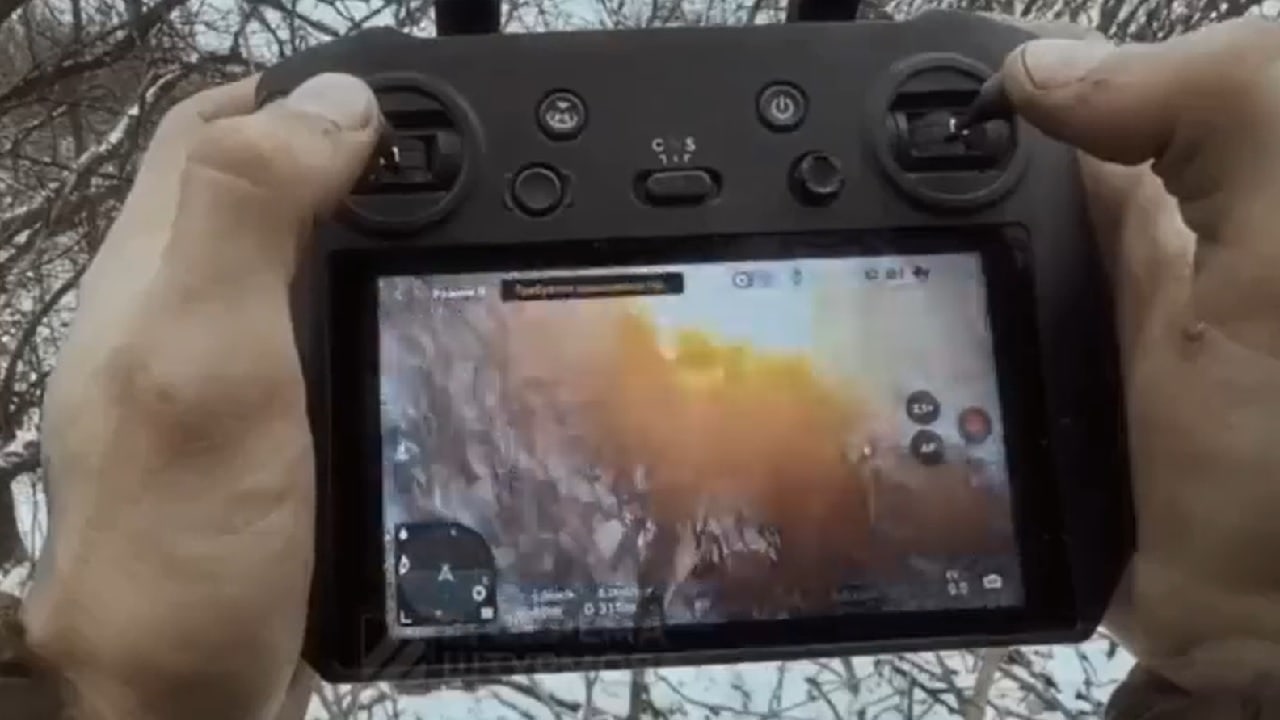During the Pacific Campaign of World War II, Japan became quite concerned it could lose the war.
Tokyo turned to Kamikaze-style tactics, taking warplanes and ramming them into anything of value, to disrupt the Allied war-effort in Asia.
While neither side in the Russia – Ukraine war is using suicide planes like Japan did, both sides have their very own kamikaze weapon.
Ground Kamikaze Attack
Rob Lee, a senior fellow at Foreign Policy Research Institute, focusing on Russian defense policy, has made a name for himself on Twitter over the last year, highlighting combat footage from the Russo-Ukraine War.
In one of Lee’s most popular posts in March, Ukrainian soldiers operate and detonate a kamikaze unmanned ground vehicle, or UGV for short.
Lee’s caption reads: “Ukraine’s 3rd Assault Brigade is using kamikaze UGVs packed with explosive on Russian positions.”
In the video, set on snow-covered plains, Ukrainian soldiers show off a UGV with an explosive charge strapped to the top.
The device is improvised and homemade, with some sort of paper or plastic draped over the top.
It’s a low-rent solution, but it’s clever.
A soldier points to the UGV and speaks in Ukrainian, presumably explaining the action.
What We Know
The soldier is noteworthy in that he is middle-aged and bespectacled. His exact age is difficult to gauge – but he doesn’t look like the sort of commando you’d expect to be waging a front-line guerilla campaign against an invading enemy.
His presence on the battlefield suggests that Ukraine is using any manpower they’ve got available.
It may also suggest that Ukraine is using a skilled workforce, as this soldier could have experience in computers or engineering, which offers the advantage of the knowledge to build and program UGVs.
The video proceeds to show the UGV being set and deployed. Members of the squad are shown setting the UGV, armed on watch, and controlling the vehicle using a smartphone with attached joypad. Several soldiers are shown using controllers and likely control the UGV’s movement, camera, and onboard weaponry.
Another soldier with a controller device might be flying a drone to capture video of their mission.
The video proceeds to show the Ukrainian troops huddled in a trench, covering their ears, while another soldier on another handheld joystick device.
On the screen of this last handheld controller, an aerial shot shows an explosion. Moments later, the sound of an explosion can be heard, presumably, the delay was caused by the distance required for the sound of the explosion to travel to the position of the entrenched Ukrainians.
Since sound travels at 1,100 feet per second and the lag between an on-screen explosion and the sound of the explosion is a shade less than one second, we can assume the Russian position was about 1,000 feet from the entrenched Ukrainians.
Drones Helping Ukrainians Compensate
Russia was supposed to sweep the floor with Ukraine. But here we are, one year later plus, with Ukraine still holding out valiantly.
Obviously, Russian forces are numerically and technologically superior to Ukraine’s forces – but Ukraine has managed to compensate with an infusion of western aid, and a reliance and somewhat irregular tactics, like the UGV shown in the video.
By using aerial and ground drones, many deployed in a kamikaze-like fashion, Ukrainians have been able to minimize the head-to-head, troop-to-troop confrontations that would surely decimate their already thin ranks.
By using kamikaze drones, Ukraine has been able to preserve troops and equipment while consistently chipping away at Russian forces.
Russia is still the superior fighting force – but they clearly underestimated their Ukrainian target, and Lee’s video demonstrates why.
Ukraine’s 3rd Assault Brigade is using kamikaze UGVs packed with explosives on Russian positions. https://t.co/twxwOUKqKZ pic.twitter.com/11Z9fMS9lw
— Rob Lee (@RALee85) March 18, 2023
Harrison Kass is the Senior Editor at 19FortyFive. An attorney, pilot, guitarist, and minor pro hockey player, Harrison joined the US Air Force as a Pilot Trainee but was medically discharged. Harrison holds a BA from Lake Forest College, a JD from the University of Oregon, and an MA from New York University. Harrison listens to Dokken.

